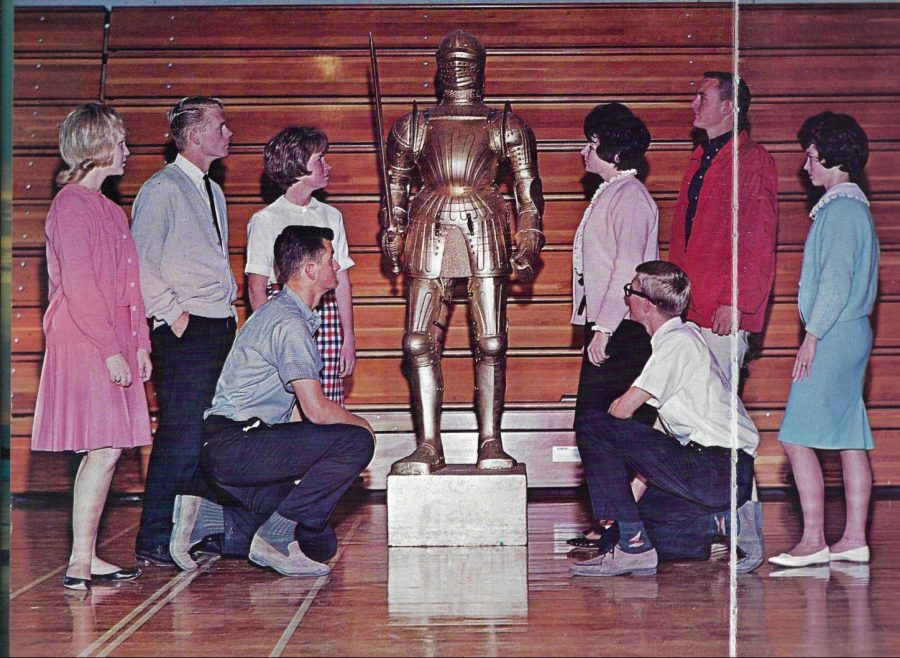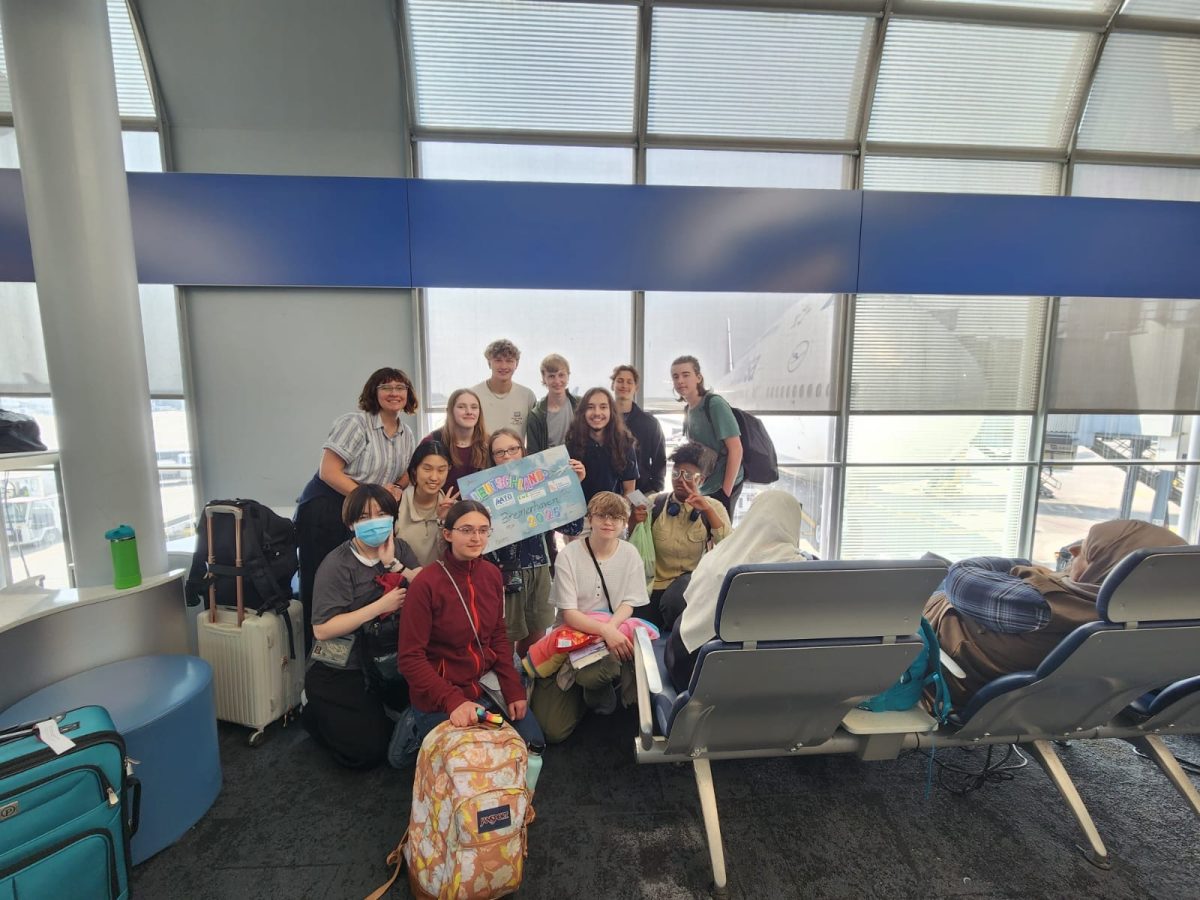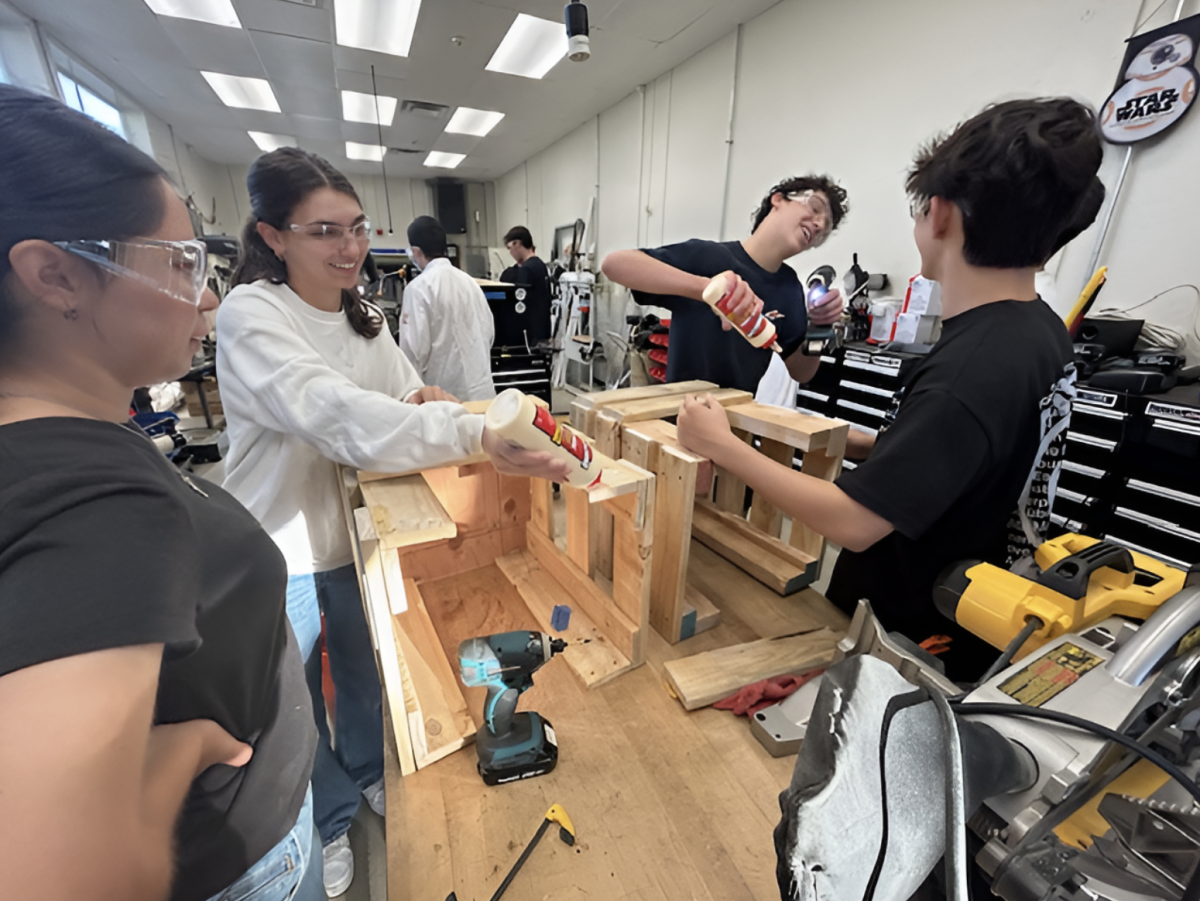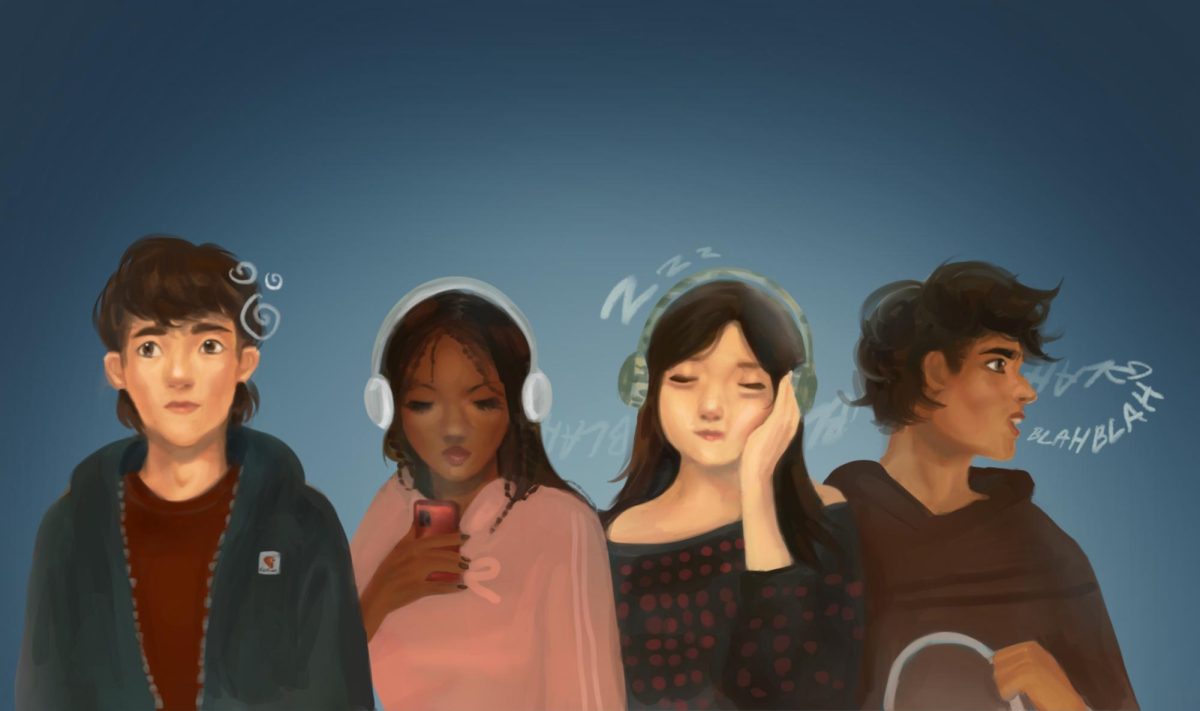As a continuing feature from last semester, The Accolade investigates some of the school’s history. For this issue, we look into the origins of how Sunny Hills’ colors became black and gold and how the campus ended up being the home of the Lancers.
This article has been updated on Tuesday, March 28, with new information about Lance Bullwinkle.
Gold and black. Those have been the school colors since the campus opened in 1959.
But why couldn’t they have been pink and purple or green and red or white and gold?
And as for the school mascot as a Lancer, why didn’t Sunny Hills become the Warriors or the Tribe or the Highlanders? Or why couldn’t the school atop a hill have become a predatory animal, like the Sunny Hills Tigers or the Coyotes?
Though most students tend to just accept these aspects of our school spirit, some have shown curiosity about their origins.
“I never thought about the [school’s mascot or colors], but if someone were to tell me the origins, I would find it interesting,” said freshman Jekamiah Del Toro, who came from Parks Junior High School, the home of the Panthers. “I just thought [the purpose of a mascot] was to excite people for rallies and school games.”
Although she has never wondered about her school spirit origin story, senior Grace Spero has no qualms about the Lancer mascot.
“Lancers are brave. … I like the Lancer [name]. I feel like some mascots are weird,” said Spero, whose middle school alma mater is Buena Park Junior High, home of the Stallions.
But she does have a suggestion for swapping out black and gold.
“I would pick yellow and baby pink,” the senior said.
So how did it come about that Sunny Hills became the Lancers with the color schemes students see around campus? The answer goes all the way back to 1959 when the campus first opened.
SUNNY HILLS OLYMPIANS? HILL TOPPERS?
Even though the school does not have an official historian, The Accolade was able to interview some from the Class of 1963, alumni who started as freshmen on campus when Sunny Hills opened in 1959.
“At the beginning of the school year, we had no lockers, no gym, no pool and no food service and went to school only half a day,” wrote Ron Mullion in an email response to The Accolade’s post on the SH alumni Facebook page seeking information about how the school got its mascot and class colors. “Not all the class rooms were finished.
“Many of the floors had no tiles, some teachers had no desks just tables.”
Despite these conditions, Mullions said he recalls the whole process to establish school spirit was a democratic one.
Before the final vote fell on Lancers as the mascot, some factions pushed for Olympians in reference to the Greek gods who gathered on Mount Olympus (the campus is also atop a hill). Or the Hill Toppers, the alumnus said.
“Those of us that came from out of the area wanted to go with the Olympians as did some of the folks from the two [local] junior highs,” Mullion said. “Early on we were referred to as the Hill Toppers because of the school sitting on the hill. … There was a lot of campaigning that went on before we all got to vote. It was probably November before we had the vote as they waited until we were going to school a full day.”
FROM BULLWINKLE TO ZIMBO TO WINSTON
Besides settling on the Lancers, Mullion said the inaugural group of SH students had a variety of color combinations to choose from before settling on black and gold.
During a Dec. 18, 2022, reunion of the Class of 1963 via Zoom, several graduates – including Mullion – reflected on the process that led to these decisions.
“We voted on all that stuff,” alumna Julie Pryor said. “We even wrote the alma mater and the fight song. … Incidentally, our mascot’s name was Bullwinkle, Lance Bullwinkle. And it was a knight in shining armor.”
No pictures can be found of Lance in the school’s first two published annuals; neither did he appear in any of the first few issues of The Accolade school newspaper.
However, the mascot made an appearance in the 1963 Helios yearbook.
On page 25, Lance’s mugshot was featured among the other graduating seniors in alphabetical order between Gloria Bulley and Donna Burgh.

A full-color version of the knight holding his lance appears on pages 2 and 3 with nine students surrounding him, gazing at him. On page 3, the title, “Dedication,” is used above three paragraphs, the first of which starts with the following:
“As we, the class of ’63, leave Sunny Hills to go on to many new and different opportunities, we wish to leave a message for all future students of Sunny Hills:
“We came here as freshmen way back in ’59. We were as new and unsure of ourselves as the brand new walls that stood around us. However, we realized that to attain anything worthwhile, we had to work for it and so we started. Traditions were born that will stand. … we are proud to have had a hand in building it and its reputation that all who come after us will take pride in it as the school secures its place in the sun.”

At this point, it’s not known what ever happened to Lance. But somehow, that mascot eventually lost favor with the students and was eventually replaced a decade later by Zimbo the gorilla.

“While I was at Sunny Hills, we had Zimbo the gorilla for a couple years,” said Spanish teacher Gene Bordy, who attended Sunny Hills from 1969-1973. “A student dressed [up] as a gorilla and did stunts at halftime.”
The mystery was that neither Bordy nor any of his classmates ever figured out who was in that costume or why “Zimbo” was chosen for a name and why that particular animal was selected to hype up school spirit at Friday night home basketball games.
“The all-time stunt was when Zimbo kicked a football [toward] the basket from the opposite free throw line, and the ball went in the basket – a 60-foot swish. I do not know when Zimbo stopped, but the stunt was not rehearsed as far as I remember.”

By the mid-1980s, Sunny Hills found another knight in shining armor.
Winston Creel had three daughters – triplets – attending Sunny Hills, and upon a suggestion from his children, for the last football game of the season against then-rival Fullerton High School in 1986, he agreed to dress up as a knight holding a lance and riding his horse around the track, according to past Accolade articles.
The idea to do this to boost school spirit originated from USC’s mascot, the Trojan horse, which trotted out in the Los Angeles Coliseum track after every USC touchdown.
After the 2015-2016 football season, Creel eventually hung up his lance and outfit – his horse having died before the start of the next season.

And since then, no one has stepped up to take up the mantel to replace Creel.
In a Nov. 9, 2017, staff editorial published in The Accolade, the publication’s editorial board questioned why no one in the administration or the Associated Student Body has found a new mascot.
“We don’t need someone in a full-on Lancer knight costume riding a real life horse, but it
would be nice to have something or someone to help guide the cheers for our sports teams,” according to the editorial. “If anything, the mascot could join or help the cheerleaders in their routines and dances as well.”
WINSTON THE LANCER RESURFACES … ON INSTAGRAM
For those who follow the school’s Instagram account, they may have noticed that it’s not called “Sunny Hills High School” or “Home of the Lancers.”
With more than 2,000 followers, the Instagram handle is @winstonthelancer, alluding to Creel again.

“We just thought it would be kind of more creative than just Sunny Hills High School,” principal Craig Weinreich said.
Nevertheless, for many students, they remain oblivious to who actually is Winston the Lancer.
“I just thought they chose a random name to put on their Instagram account,” sophomore Eloriana Castenada said. “I’ve never really thought about it [being a real person].”
Though the school’s alias as the home of the Lancers is all set in stone, Del Toro has a suggestion if Sunny Hills were to ever opt to change it.
“A lion – maybe it would fit our school colors,” he said.














